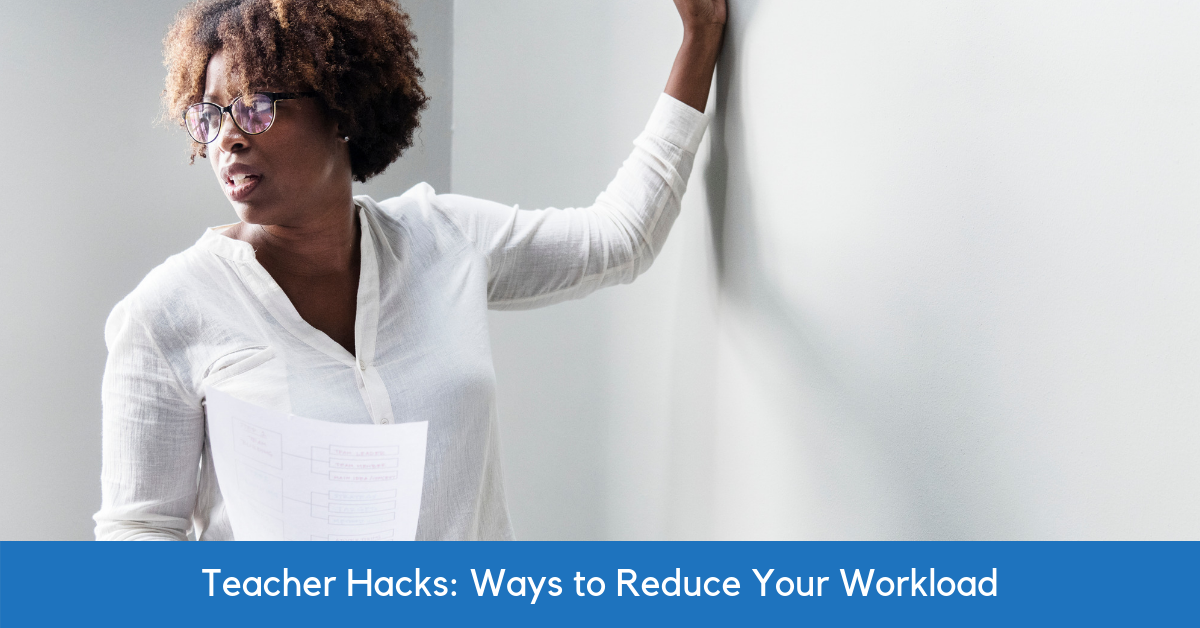As a teacher, your work follows you home every night. There are always papers to grade, reports to write, lessons to plan and parents to contact. However with some planning, you can reduce your workload so that you can better enjoy what you do: teach.
Marie Amaro and Tanya Matthews of The Highly Effective Teacher offer some great ideas on just how you can do that.
One of the tactics Amaro suggests to reduce your workload is to delegate some of your tasks. You can create a list of jobs that you know need to be done regularly. Compile these lists with your learners so that the classroom is clean and operating well. A rotation schedule can be implemented for learners to do these jobs for you.
Another idea is to increase learner independence and interdependence. Utilize “innovative cooperative learning strategies, self-directed learning, peer mentoring, open-ended tasks and problem based learning” in your lessons . This increases opportunities for learners to learn from each other, to create their own project ideas, and to take ownership of their learning.
Give learners immediate feedback and reduce the time that they are waiting for you to mark their papers, suggests Amaro. Use symbols learners understand. Focus marking on certain aspects of a lesson you’re working on, not on everything learners should have correct. Different coloured pens can show learners what they need to work on (i.e., green is fine, orange needs some work, and red needs to be completely redone).
Peer marking is another idea. You might use the “three before me” idea in which learners have their work checked by three other learners before they turn it in to you. This strategy also gets learners to learn from one another.
You can also show learners how to assess their own work before they turn it in. Individual conferencing while other learners are working independently can help you expand on written comments without too much extra work at home.
If you’re checking writing, and you have access to the Internet, have learners share assignments with you online (e-Learning), like in Google Docs, so that you can check their work as they go. Have your learners turn in drafts so that you can provide quick commentary, allowing the final product to be as easy to grade as possible.
Another idea is to show learners good examples of work so they know the level of expectations you have and can do their work to emulate it.
Prioritisation is a particularly important area for teachers to master, according to TeacherToolkit.co.uk one should “Take steps to cut out activities or tasks that are not essential to the running of the classroom. “. You can then use the time freed up from the activities you scrapped to make your classroom and teaching time more efficient.
Another idea TeacherToolkit suggests is to utilize technology to help you collaborate with your colleagues – examples being: sharing documents to brainstorm ideas, collaborating on lessons and communicating the curriculum expectancies. You can also organize your to-do lists, create spreadsheets to keep track of learning goals for learners, or take advantage of the many apps and teacher tools available online to help you organize your classroom and keep track of your learners’ progress.
Finally, create a routine that will allow you to get your paperwork done. Stick with your routine so that you get all of your administrative work completed in a timely fashion.

Snapplify and FNB Collaborate for Success
Navigating the educational landscape as parents and caregivers often means balancing financial constraints with providing the best opportunities for our children. In South Africa, the


